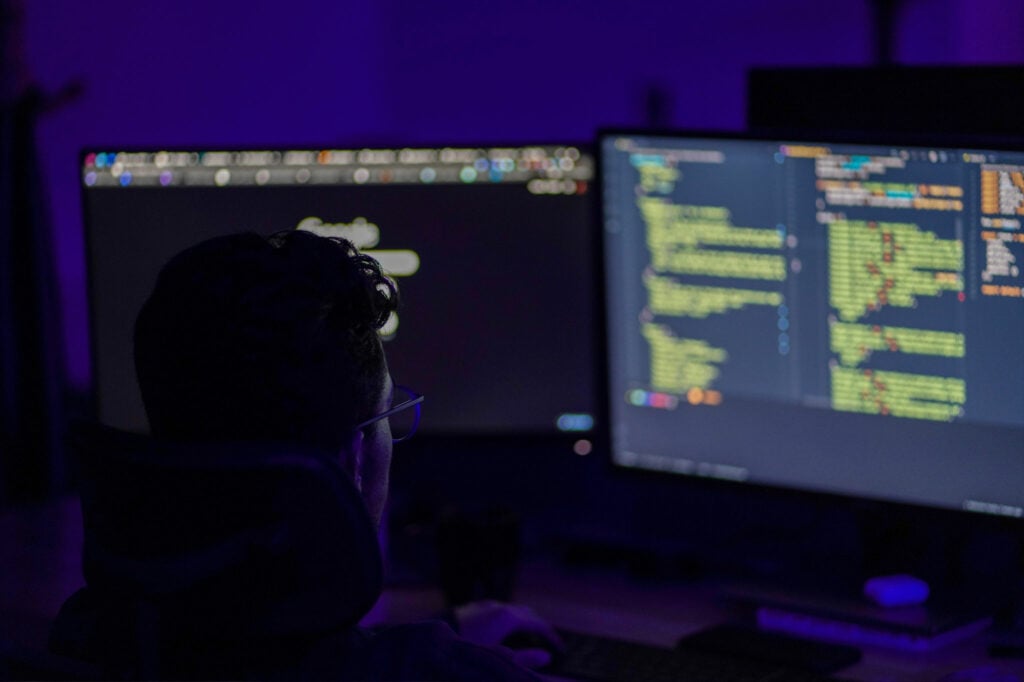Is software patentable in 2024? As a software developer or tech entrepreneur, understanding this is vital to safeguard your hard-earned innovations, especially in the realm of novel software solutions. Before delving into the complexities of securing intellectual property rights through patents, you need to answer a crucial question: “Is my software patentable?” To shed light on this matter, we’ve put together a detailed guide that focuses on the patentability of digital and computer-implemented inventions—spoiler alert, the answer is a resounding “yes!” Get to grips with the ins and outs of securing international protection for your software. In short, if you’re seeking clarity on Software Patentability 101, you’ve come to the right place!
Why Read This Article?
- Gain a comprehensive understanding of software patentability, the legal protection of software inventions, and its criteria such as novelty and non-obviousness.
- Discover the advantages and drawbacks of software patents, and how they affect innovation in tech industries through aspects like litigation expenses, market lock-in effects, competitive advantages, and consumer pricing.
- Equip yourself with the knowledge to protect your software inventions effectively and navigate the intellectual property landscape with confidence.
- Learn about the crucial role of patent attorneys in navigating the complex process of obtaining a software patent and understand the varying requirements across different countries and patent offices.
Understanding Software Patentability
Addressing the question ‘Is software patentable?’ has become increasingly important in the tech industry, with the rapid development of new and novel software inventions. A granted software patent can grant its holder exclusive rights to use, sell or manufacture a specific invention for 20 years, providing an edge in a hyper-competitive industry. The process of obtaining such patents is complex and the proper understanding and drafting or your application is key. Since not only do they need to meet certain criteria (such as novelty, non-obviousness and technical improvements), but also require clear articulation of your novelty, components, and processes before they can be approved by the United States Patent and Trademark Office (USPTO) Examiner assigned to your application.
Criteria for Patentable Software
When seeking software patentability, it is essential to understand the requirements a computer program must meet. In particular, for any computer-implemented or software application be eligible for protection with the (USPTO) it has to possess novelty to be useful and non-obvious. There should also exist an adequate level of details on how the product works as well as what technical improvement does its operation address or solve?
Primarily, when it comes to software patent applications, inventions that offer innovative technical solutions through novel features, functionality and processes are essential. These inventions must demonstrate that they bring something unique to the table, either by improving machine performance or by providing more efficient ways to tackle specific technological issues or improvements over existing technology. By proposing a clear, demonstrable solutions or methods that show tangible enhancements over existing methods or systems, the chances of receiving a Notice of Allowance are much greater.
Challenges in Obtaining a Software Patent
Getting a software patent is a complicated process and is no easy feat. The key is to express the innovation in such an articulate way that clearly shows its distinctiveness, non-obviousness, and advancement when compared with existing technology. This calls for thorough comprehension of both the program itself and fundamental processes in executing your software system. In addition to these requirements, the software must clearly have a well-defined “point of novelty” and well drafted set of claims demonstrating the process or method. This “point of novelty” may include demonstrating an improvement over existing technology or addressing technical problems in a novel way.
The Role of Patent Attorneys in Software Patents
The filing of a software patent application is complex and requires the experience of a patent firm well versed in software and computer-implemented technology. It is advised to consult with a qualified patent attorney who can oversee the entire process. Patent attorneys are strategic allies in navigating the intricate landscape of software patents. They bring to the table a unique blend of legal expertise and technical understanding, enabling them to craft persuasive patent applications that meet USPTO criteria and withstand examination at the USPTO.
Their deep understanding of both software technology and patent regulations specific to this domain, positions them to provide invaluable guidance and provide a roadmap of “best practices” when drafting and prosecuting your patent application. They can identify potential pitfalls and opportunities, helping to align your patent strategy with your broader business objectives. This strategic advantage can be a game-changer when it comes to protecting your intellectual property rights.
Becoming a patent attorney requires not only an undergraduate degree in science or engineering and formal legal education, but also passing both the state bar exam and the United States Patent and Trademark Office (USPTO) registration examination, commonly known as the “patent bar”.
Selecting the Right Patent Attorney
For your software patent application to be successful, it is important that you choose an experienced and competent patent attorney who understands your technology and has experience in drafting your software patent application. A proven record in managing similar applications will provide the necessary expertise needed for success when it comes to prosecuting your patent application. They should also have a good technical understanding of the relevant technology since this allows them to accurately describe any invention being presented and better comprehend associated laws governing such application and follow-on office actions.
International Perspectives on Software Patentability
Software companies and developers looking to secure global protection for their inventions must understand the varying patentability approaches across countries and various patent offices. For instance, while the U.S. regulations strictly prohibit the patenting of abstract ideas, Europe’s patent laws focus more on the technical innovation implemented through computers. Meanwhile, Japan and other East Asian nations may require a combination of hardware and software along with ‘notable progress’ or ‘prominent substantive features’ before granting a patent related to computers.
As such, there is no consensus regarding how best to obtain patents for inventions involving computing technology worldwide. Instead, it is important that inventors take into consideration each region’s respective requirements and prioritize accordingly to ensure adequate coverage against infringement globally.
U.S. Software Patents
Navigating the patenting process for software in the United States can be difficult as it requires a well-defined “point of novelty” and clear explanation of the process your software implements. When evaluating a software’s eligibility, an essential part of this procedure pertains to determining whether the application is approved deals with ensuring your application is not merely “abstract’ under 35 U.S.C. § 101. This two-step analysis follows the USPTO examinations guidelines.
The Alice v CLS Bank case from 2014 made attaining such patents far more complex due to its ruling making unclear if applications related to technology were suitable for patent protection, particularly regarding their approach towards handling abstract concepts.
European Software Patenting
According to the European Patent Convention (EPC), software patenting presents an alternate approach where computer programs are not able for protection. To secure a valid patent claim, it is necessary that a software invention displays unique elements arranged in particular fashion, which represent originality and non-obviousness of concept. This process amplifies the probability of obtaining a successful software patent from Europe.
To further elaborate, the European approach towards software patenting is a bit different from other regions. The EPC does not consider computer programs as patentable inventions on their own as the software is likely consider non-patentable subject matter. However, if the software invention and/or computer medium provides a technical contribution to the state of the art or solves a technical problem in a non-obvious way, it may be considered patentable subject matter. This is why it’s crucial to clearly articulate the technical processes, features, and functionality of the software.
Moreover, the European Patent Office (EPO) provides guidelines on how to assess the patentability of software-related inventions. These guidelines help inventors and patent attorneys in preparing the patent application. The EPO also provides training and resources to help inventors understand the patenting process.
Therefore, while the EPC might seem to present a hurdle for software patenting, with the right approach and understanding of the requirements, it is indeed possible to secure a software patent in Europe.
Asian Software Patenting
Discussing software patenting, it’s essential to understand that each country in Asia has its own unique set of rules and procedures. For instance, in South Korea, the process of acquiring a patent is similar to that of any other product. On the other hand, Japan and China have distinct technical requirements that must be met before a patent can be granted, including making a unique, specific claim. Both countries also extend robust protection for computer implemented inventions when issuing software-related patents. These nuances significantly influence the strategies used during the application process and the overall likelihood of securing such patents.
Strategies for Successfully Patenting Software
The first step is the software process should begin with a thorough disclosure of your software platform and prior art search. A comprehensive review of existing patents as well as non-patent literature is essential when searching for any similar software systems or solutions. This process will not only determine if your invention is patentable, but will ensure your claim set is drafted in manner that provides the most comprehensive protection in light of the related prior art technologies.
Prior Art Search
For any software patent application, performing a prior art search is a critical step. This assessment involves studying both published patents and non-patent literature to spot related inventions that already exist. In the field of software patenting, this process is essential in order to avoid potential infringing issues as well uncover information on existing similar technologies for accurate knowledge during the application procedure.
The primary purpose of conducting such searches is to determine if existing patented technologies could potentially block significant functions or processes of the software in question. This examination assesses the feasibility of obtaining protection through a software patent and minimizes possible legal issues associated with infringement claims.
Undertaking a comprehensive analysis helps ensure the soundness of the patent filing and increases the prospects of gaining approval for the patent over specific applications under development. This is a crucial step before investing significant time and resources into a non-provisional patent application.
Crafting Strong Patent Claims
An integral part of patenting software is forming strong claims that define the scope and magnitude of a given patent, thus securing its legal protection. Patent claims should express an invention’s distinctiveness from existing prior art while also highlighting specific features associated with the technology in question – namely for software-related patents. Mentioning such details can strengthen an individual or organization’s application process when it comes to protecting their intellectual property rights via digital means.
In addition to this, it is crucial to remember that the strength of a patent claim largely depends on the clarity and precision of its language. The claim must be written in such a way that it is easily understood, yet comprehensive enough to cover all the essential aspects of the invention. A well-crafted claim will provide a clear demarcation between your invention and the prior art, making it easier to defend against infringement and to enforce your rights.
Moreover, it’s important to note that the process of crafting strong patent claims is not a one-time task. It requires ongoing effort as the software evolves and new features are added. Regular reviews and updates to the patent claims can help to ensure that the protection provided by the patent remains robust and relevant.
Lastly, while crafting strong patent claims is an essential step in the patenting process, it is equally important to ensure that the rest of the patent application – including the specification and drawings – is of high quality. These elements of the application support the claims and provide the context necessary for understanding the invention. Therefore, dedicating ample time and resources to these aspects of the patent application can significantly enhance the overall strength and enforceability of the resulting patent.
Alternatives to Software Patents
While there are alternatives to software patents, such as copyright registration and trade secret shielding, these methods may not provide the robust protection that software developers often need. Copyright registration primarily safeguards the creative expression in the code, but it does not protect the underlying processes and methods that make the software function.
Similarly, while trade secret laws can protect confidential data, they do not extend to the functional aspects of the software that are exposed during normal use. As such, these methods might not be sufficient if the software’s unique functionality, rather than its code, is its key selling point. For comprehensive protection that covers not just the code but the innovative processes behind the software, software patents often emerge as the more suitable protective measure. This allows developers to secure their intellectual property rights more effectively, even if they don’t qualify or prefer an alternate approach.
Copyright Protection for Software
Copyright is a form of legal protection for software that offers an alternative to obtaining patent rights. While it applies automatically when a work is created, registering the copyright with the U.S. Copyright Office provides additional legal benefits. Unlike patents which protect invention components like functionality or processes, copyright safeguards only the exact code.
Copyright protection typically lasts longer than patents (which offer protection for 20 years from the application date). In most cases, copyright protection extends for the life of the author plus an additional 70 years. In the case of works made for hire or those created anonymously, the protection lasts for 95 years from the year of its first publication or 120 years from the year of its creation, whichever expires first.
Trade Secret Protection for Software
Software developers may benefit from trade secret protection for their software as it does not require public disclosure and can be perpetual. This type of security keeps the code or algorithms confidential to maintain a competitive edge, though there are certain limitations such as being vulnerable to independent discovery or reverse engineering if revealed. Loss of value means that the confidentiality is then lost too, but this form of defense still offers advantages over other options available.
The Impact of Software Patents on Innovation and Competition
Software patents not only safeguard intellectual property, but also have an important impact on technology-based innovation and competition. On one hand, they can encourage creativity by safeguarding inventors’ rights while restraining unauthorized replication of software products. At the same time, granting patent holders exclusive use for up to 20 years could potentially impede development of other ground breaking technology.
To this duality in affect is a range of other adverse effects such as competitive struggles resulting from expensive legal cases or expansive patent rules that stifle consumer choice and increase prices due to market monopolies. Leaving developers with feelings of uncertainty about their own creations, which all stem back to these controversial (yet widely used) concepts known simply as ‘software patents’.
Advantages of Software Patents
Software patents have a variety of advantages. Through legal protection, inventors are able to secure control over their software creations and intellectual property (IP). This can increase the value of the patented invention and help startups maintain market superiority as competitors cannot produce, sell or bring in without approval from the patent holder. These exclusive rights enable creators to guard against any unapproved replication of their product by rivals. By safeguarding IP through the lawful implementation of patent laws for software applications, inventors acquire ultimate security and integrity over what they’ve created/invented.
Furthermore, software patents can serve as a powerful tool for attracting investors. Investors often view patents as a sign of a company’s innovative capacity and potential for market dominance. Thus, holding a patent can increase a company’s attractiveness to investors and potentially open up new avenues for funding. This can be particularly beneficial for startups and small software companies that rely on external funding to grow their business.
In addition, software patents can also open up additional monetization streams, such as licensing opportunities. By holding a patent, a software company can license its technology to other companies, creating a new source of revenue. This not only enhances the company’s financial standing but also its reputation as an innovator in its field. Thus, patents can significantly contribute to a company’s market positioning and overall business strategy.
Moreover, software patents can also serve as a defensive strategy against potential infringement lawsuits. By holding a patent, a company can deter other companies from using its patented technology without permission. In case of a dispute, the patent can provide the company with a legal basis to defend its rights and potentially seek damages for infringement.
While obtaining a software patent can be a complex and lengthy process, the benefits it can provide in terms of legal protection, market dominance, investor appeal, enhanced monetization opportunity, and defensive strategy make it a worthwhile endeavor for many software inventors.
Criticisms and Concerns
Software patents can sometimes create significant barriers to the advancement of software technology and innovation. Developers often find it challenging to fully detail their solutions due to the rigid standards set by patent laws. This can discourage the improvement of existing ideas and the creation of new ones. In addition, the threat of litigation can lead to a stifling of competition, with high legal fees and broad interpretations by authorities sometimes resulting in market monopolies. These uncertainties can create a climate of fear among software developers, leading to inflated prices for consumers. The biggest concern and criticism regarding software patents is that they can potentially stifle innovation, which is the lifeblood of the tech industry.
Summary
Navigating software patentability can be complex but rewarding. Understanding the criteria that make a program eligible for a patent, the role of attorneys in this process, and global perspectives on software patents can help developers protect their inventions. It’s also important to be aware of the benefits and criticisms of software patents before deciding on the best intellectual property strategy.
As the pace of technological advancement accelerates, grasping how to protect your intellectual property becomes more and more crucial. Being knowledgeable about patents empowers software developers and tech entrepreneurs to retain proprietary rights over their innovations. Regardless of the challenges, being well-informed and proactive in navigating the patent process can lead to significant rewards. It’s not just about protecting your invention—it’s about staking your claim in the world of innovation and shaping the future of technology!
Frequently Asked Questions
Is software patentable or copyrighted?
Both copyright and patent laws can be used to protect software. Copyright laws protect the software’s code, while patent laws cover the unique processes and functionalities of the software.
Can a software idea be patented?
A common query is, ‘Is software patentable?’ and this applies to software ideas as well, which can be patented under certain conditions. Software inventions can be patented as long as they fulfill all of the requirements expected from any other type of invention. This applies to ideas related to software just like it does for those in any other field.
Why is software hard to patent?
Navigating the patent application process for software inventions can be particularly challenging due to the intricate nature of software and the high level of detail required by the United States Patent and Trademark Office (USPTO). The complexity of software patents is further compounded by the Alice standard, which imposes stringent criteria for distinguishing patent-eligible inventions from abstract ideas.
Documenting a software invention in a manner that satisfies these requirements can be a daunting task. However, this process can be simplified with the assistance of a patent attorney who is well-versed in software. Such professionals have the expertise to articulate the nuances of a software invention in a way that meets the stringent criteria of the USPTO and the Alice standard, thereby enhancing the likelihood of obtaining a patent.
What is the role of a patent attorney in software patents?
A patent attorney, particularly one proficient in software, can significantly simplify the patent application process and enhance the likelihood of obtaining a patent. According to a study by the USPTO, applications with the involvement of patent attorneys are 50% more likely to be granted. This demonstrates the critical role of a patent attorney in securing a patent. They provide expert advice, protect custom software, and strategize to increase the company’s value. Their expertise in patent laws and software solutions ensures robust protection of intellectual property.
Final Thoughts Regarding Software Patentability and Conclusion
In conclusion, understanding and navigating the intricacies of software patentability is crucial for any software developer or tech entrepreneur. This process, while complex, can be made significantly easier with the right guidance. If you’re looking to protect your software invention and need assistance, don’t hesitate to reach out to us at The Rapacke Law Group. We’re here to help you secure your intellectual property rights and guide you through the patent process. Schedule a free IP strategy call or try our Intelligent IP Quiz to get started. Let’s work together to turn your innovative ideas into valuable assets!




